
Global electronics components and solutions distributor Arrow Electronics (NYSE: ARW) reported Q3 CY2025 results beating Wall Street’s revenue expectations, with sales up 13% year on year to $7.71 billion. On the other hand, next quarter’s revenue guidance of $8.1 billion was less impressive, coming in 3.1% below analysts’ estimates. Its non-GAAP profit of $2.41 per share was 5.1% above analysts’ consensus estimates.
Is now the time to buy Arrow Electronics? Find out by accessing our full research report, it’s free for active Edge members.
Arrow Electronics (ARW) Q3 CY2025 Highlights:
- Revenue: $7.71 billion vs analyst estimates of $7.66 billion (13% year-on-year growth, 0.7% beat)
- Adjusted EPS: $2.41 vs analyst estimates of $2.29 (5.1% beat)
- Revenue Guidance for Q4 CY2025 is $8.1 billion at the midpoint, below analyst estimates of $8.36 billion
- Adjusted EPS guidance for Q4 CY2025 is $3.54 at the midpoint, below analyst estimates of $3.80
- Operating Margin: 2.3%, in line with the same quarter last year
- Free Cash Flow was -$312 million, down from $62.04 million in the same quarter last year
- Market Capitalization: $5.98 billion
Company Overview
Founded as a single retail store, Arrow Electronics (NYSE: ARW) provides electronic components and enterprise computing solutions to businesses globally.
Revenue Growth
Reviewing a company’s long-term sales performance reveals insights into its quality. Any business can put up a good quarter or two, but many enduring ones grow for years. Unfortunately, Arrow Electronics’s 1.3% annualized revenue growth over the last five years was weak. This fell short of our benchmarks and is a tough starting point for our analysis.
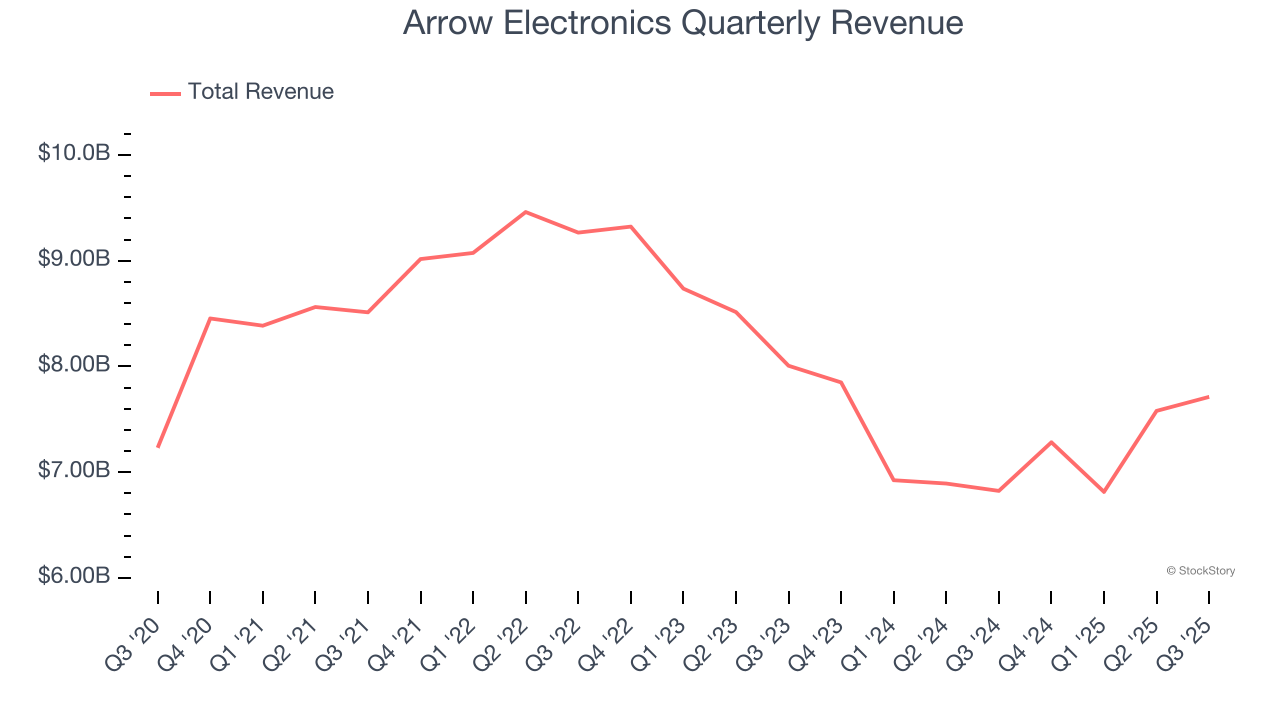
We at StockStory place the most emphasis on long-term growth, but within industrials, a half-decade historical view may miss cycles, industry trends, or a company capitalizing on catalysts such as a new contract win or a successful product line. Arrow Electronics’s performance shows it grew in the past but relinquished its gains over the last two years, as its revenue fell by 7.8% annually. 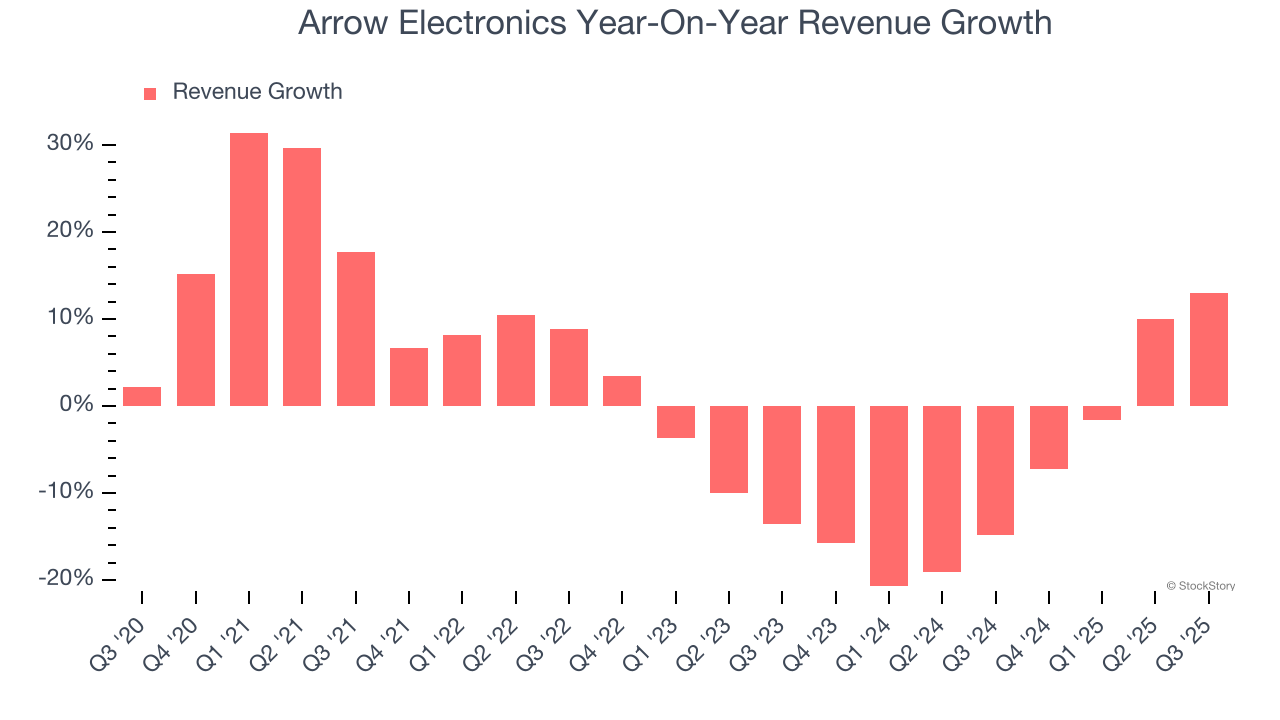
We can dig further into the company’s revenue dynamics by analyzing its most important segments, Components and ECS, which are 72% and 28% of revenue. Over the last two years, Arrow Electronics’s Components revenue (electronic component sales) averaged 11.6% year-on-year declines. On the other hand, its ECS revenue (computing solutions and services) averaged 7% growth. 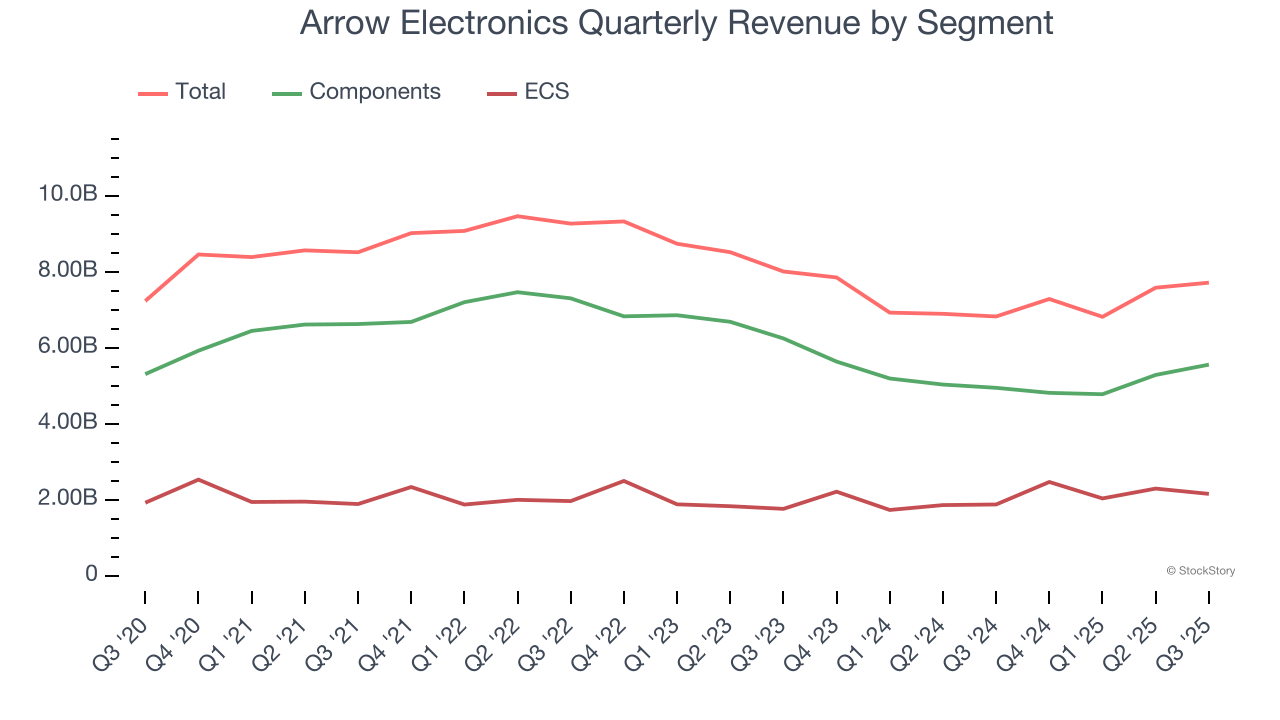
This quarter, Arrow Electronics reported year-on-year revenue growth of 13%, and its $7.71 billion of revenue exceeded Wall Street’s estimates by 0.7%. Company management is currently guiding for a 11.2% year-on-year increase in sales next quarter.
Looking further ahead, sell-side analysts expect revenue to grow 8.5% over the next 12 months, an improvement versus the last two years. This projection is above the sector average and implies its newer products and services will catalyze better top-line performance.
Here at StockStory, we certainly understand the potential of thematic investing. Diverse winners from Microsoft (MSFT) to Alphabet (GOOG), Coca-Cola (KO) to Monster Beverage (MNST) could all have been identified as promising growth stories with a megatrend driving the growth. So, in that spirit, we’ve identified a relatively under-the-radar profitable growth stock benefiting from the rise of AI, available to you FREE via this link.
Operating Margin
Operating margin is an important measure of profitability as it shows the portion of revenue left after accounting for all core expenses – everything from the cost of goods sold to advertising and wages. It’s also useful for comparing profitability across companies with different levels of debt and tax rates because it excludes interest and taxes.
Arrow Electronics was profitable over the last five years but held back by its large cost base. Its average operating margin of 4.1% was weak for an industrials business. This result isn’t too surprising given its low gross margin as a starting point.
Looking at the trend in its profitability, Arrow Electronics’s operating margin decreased by 1.6 percentage points over the last five years. This raises questions about the company’s expense base because its revenue growth should have given it leverage on its fixed costs, resulting in better economies of scale and profitability. Arrow Electronics’s performance was poor no matter how you look at it - it shows that costs were rising and it couldn’t pass them onto its customers.
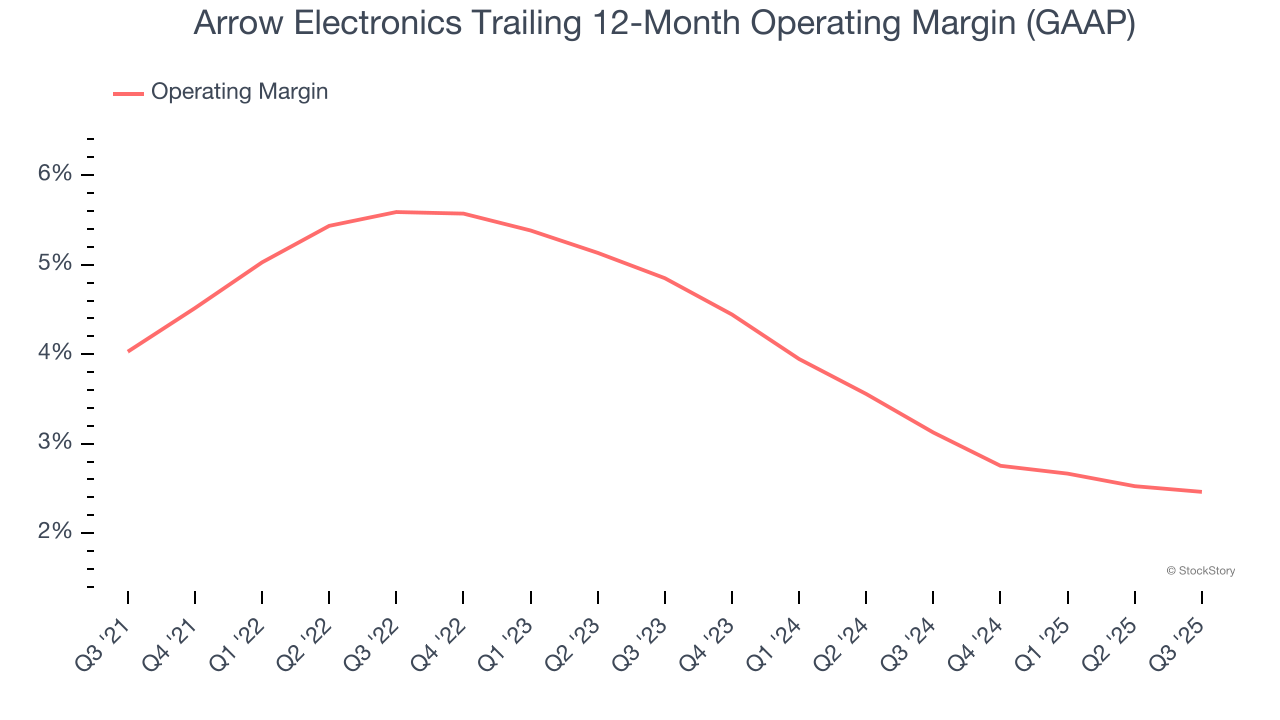
In Q3, Arrow Electronics generated an operating margin profit margin of 2.3%, in line with the same quarter last year. This indicates the company’s cost structure has recently been stable.
Earnings Per Share
We track the long-term change in earnings per share (EPS) for the same reason as long-term revenue growth. Compared to revenue, however, EPS highlights whether a company’s growth is profitable.
Arrow Electronics’s EPS grew at an unimpressive 7% compounded annual growth rate over the last five years. This performance was better than its flat revenue but doesn’t tell us much about its business quality because its operating margin didn’t improve.
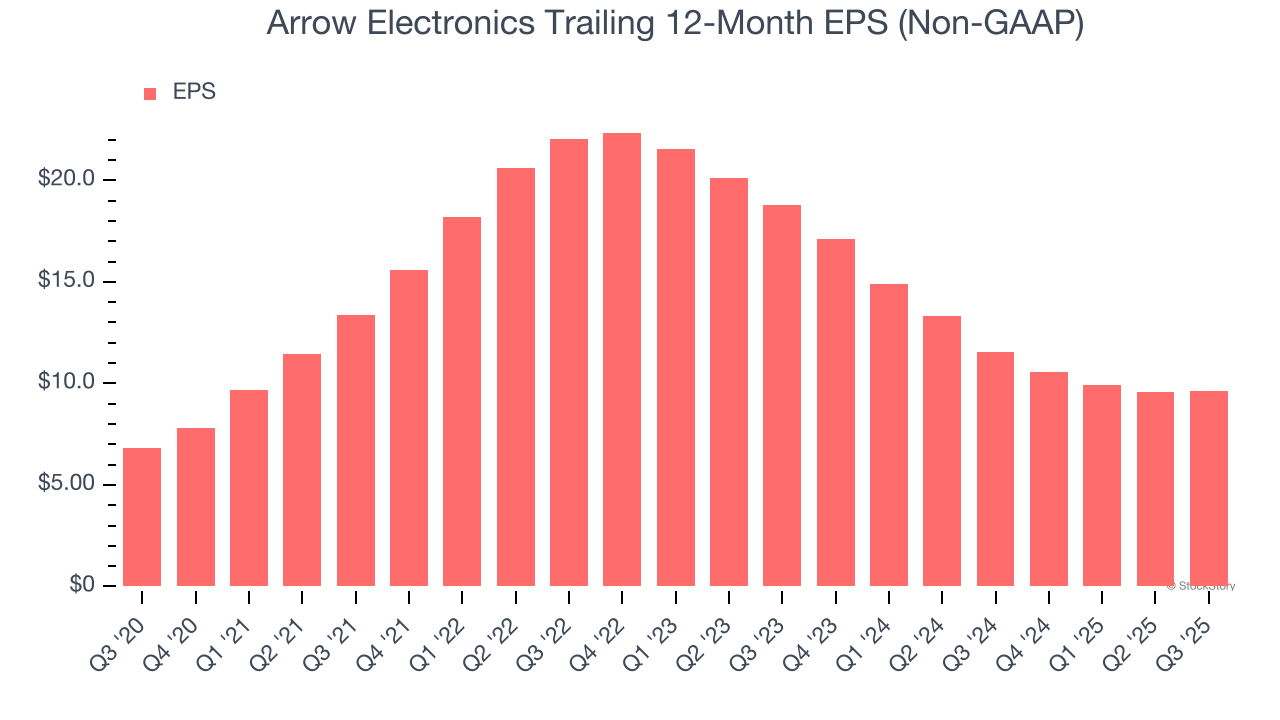
We can take a deeper look into Arrow Electronics’s earnings to better understand the drivers of its performance. A five-year view shows that Arrow Electronics has repurchased its stock, shrinking its share count by 33.2%. This tells us its EPS outperformed its revenue not because of increased operational efficiency but financial engineering, as buybacks boost per share earnings. 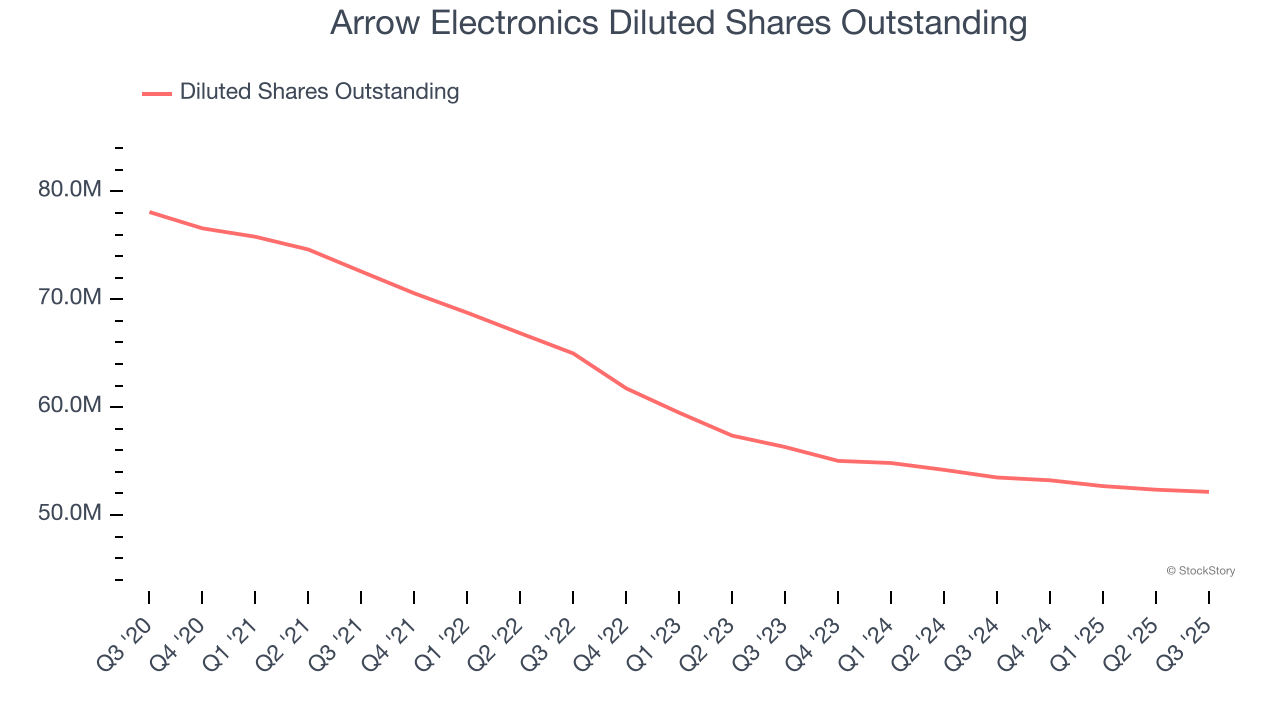
Like with revenue, we analyze EPS over a more recent period because it can provide insight into an emerging theme or development for the business.
For Arrow Electronics, its two-year annual EPS declines of 28.5% show it’s continued to underperform. These results were bad no matter how you slice the data.
In Q3, Arrow Electronics reported adjusted EPS of $2.41, up from $2.38 in the same quarter last year. This print beat analysts’ estimates by 5.1%. Over the next 12 months, Wall Street expects Arrow Electronics’s full-year EPS of $9.61 to grow 37.5%.
Key Takeaways from Arrow Electronics’s Q3 Results
We were also glad its EPS outperformed Wall Street’s estimates. On the other hand, its revenue and EPS guidance for next quarter fell short of Wall Street’s estimates. Overall, this was a softer quarter. The stock remained flat at $113.57 immediately following the results.
Should you buy the stock or not? If you’re making that decision, you should consider the bigger picture of valuation, business qualities, as well as the latest earnings. We cover that in our actionable full research report which you can read here, it’s free for active Edge members.





